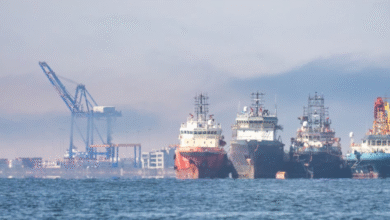Forum Building corridors for growth across the Sahel and beyond
The World Bank announced today, at the One Planet Summit, its intention to invest more than 5 billion dollars in favor of 11 countries of the Sahel and the regions of Lake Chad and the Horn of Africa. With this support, we hope to build growth corridors to transform the lives of millions of people.
By Simeon Ehui *
In the Sahel, temperatures are rising one and a half times faster than the global average, and around 80% of arable land has already lost some of its natural productivity. As a result of these factors, the land available for food production or grazing is shrinking and water resources are drying up, making people living in the region more vulnerable.
The COVID-19 pandemic has added to these difficulties and could push up to 40 million Africans into extreme poverty, erasing five years of progress in the fight against poverty. In the Sahel alone, more than 17 million people are already food insecure.
« Degraded lands can become fertile again, water reserves can be preserved or replenished, change the lives of residents and create employment opportunities »
Despite this sad record, there are reasons to remain hopeful. Degraded lands can become fertile again, water reserves can be preserved or replenished, change the lives of residents and create employment opportunities.
This is the reason why the World Bank announced today, on the occasion of the One Planet Summit, its intention to invest more than 5 billion dollars in favor of 11 countries of the Sahel and the regions of Lake Chad and from the Horn of Africa. Covering an area stretching from Senegal to Djibouti, this funding will be used to restore degraded landscapes, improve agricultural productivity, develop climate-resilient infrastructure and increase livelihoods and employment along the way. With this support, we hope to build growth corridors to transform the lives of millions of people.
« The Great Green Wall is an African regional initiative to restore 100 million hectares of land and create ten million green jobs by 2030 »
In 2012, the World Bank launched the Sahel and West Africa Program in support of the Great Green Wall Initiative (SAWAP, its acronym). Funded to the tune of $ 1 billion by the World Bank and the Global Environment Facility (GEF), the Great Green Wall is an African regional initiative to restore 100 million hectares of land and create ten million green jobs by 2030. The SAWAP program has transformed nearly 1.6 million hectares of land into sustainable management space and has reached over 19 million people.
Going forward, our efforts will focus on projects that will strengthen livelihoods and resilience. Our experience in the Sahel has allowed us to draw some lessons on how to optimize results.
There is a need to expand agroforestry practices to improve soil fertility, provide fodder for livestock and improve microclimates. In Niger, activities managed by farmers to naturally regenerate trees and other native plants have made it possible to develop farms with a high density of trees as well as higher grain production. For families, this represents more food but also surplus to sell.
We must protect and replenish water supplies by collecting and concentrating runoff water on cultivated areas. In Burkina Faso, for example, efforts to recharge the groundwater level have enabled farmers to create vegetable gardens. They were thus able to improve food security but also sell what they did not consume.
Prepare for increasingly common natural disasters
There is also a need to combat erosion and prepare for increasingly common natural disasters as climate change affects weather patterns. In Nigeria, nearly 2.6 million people benefit from the Erosion and Watershed Management Project (better known by its acronym NEWMAP). With a budget of $ 900 million, it strengthens preparedness for natural disasters and climate risks and helps fight erosion. As a result, 16 states were able to improve their erosion risk maps and prepare better watershed management plans, 75 hydrometeorological stations were installed, providing data for integrated watershed management, and large areas of eroded gullies have been restored.
We need to strengthen security of tenure, a prerequisite for encouraging farmers to manage their land sustainably. In Ethiopia, in addition to large-scale land restoration, land titles have been distributed to more than 360,200 households, often headed by women. Beneficiaries include some 10,000 young people who did not own land and who received titles in exchange for the restoration of degraded communal land. This encouraged them to invest in soil productivity and soil and water conservation.
A multisectoral approach through more than 60 projects
The more than 5 billion dollars that we plan to invest by 2025 will allow us to implement a multisectoral approach through more than 60 projects. They will help strengthen community climate action in Burkina Faso; the skills of young people in Chad; female entrepreneurship in Djibouti; agriculture and livestock in Mauritania; water security in Niger; access to electricity in Ethiopia; or land tenure security in Senegal, to name just a few examples.
« Restore lands and livelihoods in the drylands of Africa »
Restoring land and livelihoods in Africa’s drylands is a tremendous hope, and it is by joining forces with communities, states and our partners that it will become a reality.
* Simeon Ehui, Regional Director for Sustainable Development for Africa
Source: https://blogs.worldbank.org/fr/nasikiliza/construire-des-couloirs-de-croissance-travers-le-sahel-et-au-dela






